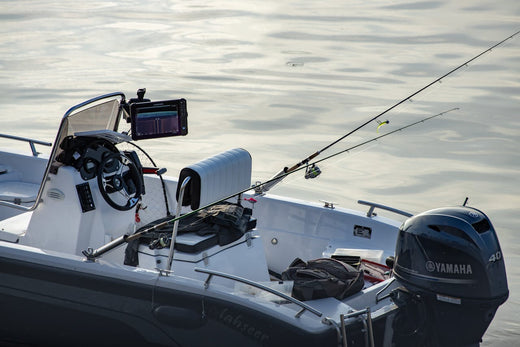Your Cart is Empty
ORDERS OVER $99 UNLOCK FREE* SHIPPING
Menu
-
- Home
- Archery
- Automotive/RV
- Boating
- Camping
- Fishing
- Hunting
- Outdoor
- Shooting
- Trailering
- Watersports
- Brands
-
- (208) 590-7477
- Login

ORDERS OVER $99 UNLOCK FREE* SHIPPING

Top Waterproof Backpacks for Hiking: Stay Dry on Trails!
6 min read
When embarking on a hiking adventure, the unpredictable nature of weather can pose significant challenges. This is where waterproof backpacks for hiking become an indispensable asset. Designed specifically to keep your gear dry, these backpacks allow you to focus on the trail ahead rather than worrying about sudden downpours or splashes from streams.
Here are some compelling reasons why you should consider investing in a waterproof backpack:
- Protection from the Elements: Waterproof backpacks are constructed with materials that can withstand rain, snow, and even mud, ensuring that your belongings remain safe and dry.
- Durability: These backpacks are not only resistant to water but are often built to endure rough terrains, making them ideal for rigorous hikes.
- Convenience: With specialized waterproof compartments, you can organize your gear efficiently, making it easy to access essentials like food, maps, and first aid kits.
- Peace of Mind: Knowing that your equipment is secure allows you to fully immerse yourself in the beauty of nature without the constant worry of damage.
Whether you are navigating through the forest or scaling a mountain, having a reliable waterproof backpack can enhance your hiking experience. Visit our website to learn more and get started today! Click here.
Key Features to Look for in Waterproof Backpacks

Choosing the right waterproof backpack for hiking can significantly influence your outdoor experience. To ensure you select a backpack that meets your needs, consider the following key features:
- Material: Look for backpacks made from high-quality, waterproof materials such as nylon or polyester with waterproof coatings. These materials not only provide water resistance but also durability against wear and tear.
- Sealed Seams: Check if the backpack has sealed or taped seams. This feature helps prevent water from seeping through the stitching, providing an extra layer of protection against moisture.
- Waterproof Zippers: Standard zippers can allow water to enter. Opt for waterproof zippers or storm flaps that cover the zippers, ensuring that your belongings remain dry even in heavy rain.
- Storage Capacity: Consider how much gear you will need to carry. Backpacks come in various sizes, so choose one that can accommodate your essentials without being overly bulky.
- Comfort Features: Look for padded shoulder straps, a breathable back panel, and an adjustable hip belt. Comfort is crucial during long hikes, and these features help distribute weight evenly.
- External Attachment Points: Features like loops and straps for securing gear externally can be beneficial for carrying sleeping bags, trekking poles, or other items.
By focusing on these features, you can find a waterproof backpack that not only meets your hiking needs but also enhances your overall outdoor experience.
Top Waterproof Backpacks for Hiking Reviewed

When it comes to selecting the best waterproof backpacks for hiking, several models stand out due to their quality, functionality, and user feedback. Here are some top contenders:
- Osprey Atmos AG 65: Renowned for its innovative Anti-Gravity suspension system, this backpack provides unmatched comfort and stability. It features a durable, water-resistant fabric and an adjustable harness, making it ideal for multi-day hikes.
- Deuter Futura Vario 50+10: This versatile backpack is equipped with a rain cover and made from robust materials that resist wear and tear. The adjustable back length and aircomfort back system ensure you stay cool and comfortable on longer treks.
- REI Co-op Flash 22: A lightweight option, the Flash 22 is perfect for day hikes. It has a water-resistant shell and a simple design that allows for easy packing and access to gear.
- Patagonia Black Hole Pack 32L: Known for its durability, this backpack is made from weather-resistant materials and comes with a padded laptop sleeve, making it suitable for both hiking and everyday use.
- Marmot Graviton 40: This backpack offers excellent storage space and features a waterproof rain cover. It’s designed for comfort with its padded shoulder straps and hip belt, making it a great choice for weekend adventures.
Each of these backpacks incorporates key features that enhance their waterproof capabilities while ensuring comfort and usability on the trails. It's essential to consider your specific hiking needs and preferences when choosing the right one for you.
How to Properly Care for Your Waterproof Backpack
Maintaining your waterproof backpack is crucial to ensuring its longevity and performance on the trails. Here are several tips on how to properly care for your waterproof backpack:
- Regular Cleaning: After each hike, it’s important to clean your backpack. Use a soft brush or cloth to remove dirt and debris. For deeper cleaning, use mild soap and water, and rinse thoroughly to avoid residue buildup.
- Drying: Always allow your backpack to air dry completely before storing it. Avoid placing it in direct sunlight for extended periods, as UV rays can degrade the waterproof materials.
- Storage: When not in use, store your backpack in a cool, dry place. Avoid folding or compressing it excessively, as this can lead to creases and affect its waterproof integrity.
- Inspect for Damage: Regularly check your backpack for any signs of wear or damage, such as frayed straps or compromised seams. Addressing these issues promptly can prevent further deterioration.
- Reapply Waterproofing Treatment: Over time, the waterproof coating on your backpack may wear off. Consider using a waterproofing spray or treatment designed for outdoor gear to maintain its protective qualities.
By following these simple care tips, you can significantly extend the lifespan of your waterproof backpack and ensure it remains a reliable companion on your hiking adventures.
Tips for Keeping Your Gear Dry While Hiking

Keeping your gear dry while hiking is essential to ensure both your comfort and the functionality of your equipment. Here are some effective tips to help you protect your belongings from moisture:
- Use Dry Bags: Invest in dry bags to store your sensitive items such as electronics, clothing, and food. These bags are designed to seal tightly and protect against water ingress.
- Packing Techniques: Pack heavier and less water-sensitive items at the bottom of your backpack. Place lighter, more vulnerable items on top, and use waterproof pouches for extra protection.
- Weather-Appropriate Gear: Always check the weather forecast before heading out. Equip yourself with waterproof clothing and gear, such as a rain jacket and waterproof pants, to minimize exposure to wet conditions.
- Utilize Pack Covers: A pack cover can provide an additional layer of protection for your backpack. These lightweight, waterproof covers can easily be slipped on when rain starts to fall.
- Stay on Designated Trails: When hiking, try to stay on marked trails. Straying into waterlogged areas or crossing streams can increase the risk of water damage to your gear.
- Be Mindful of Packing Order: Organize your backpack with easy access to waterproof sections. This way, you can quickly get to essential items, such as your first-aid kit, without exposing everything else to the elements.
By implementing these strategies, you'll be better equipped to keep your gear dry, allowing you to enjoy your hike without the worry of soggy supplies.
Conclusion: Choosing the Right Waterproof Backpack

Choosing the right waterproof backpack for hiking is crucial for ensuring your outdoor adventures are enjoyable and worry-free. With a wide array of options available, it's essential to consider a few key factors:
- Material: Look for backpacks made from durable, waterproof materials such as nylon or polyester with a waterproof coating. This will help in safeguarding your gear against rain and splashes.
- Capacity: Determine the appropriate size for your needs. A backpack that is too small may not hold all your essentials, while one that is too large can be cumbersome.
- Comfort Features: Ensure that the backpack offers padded straps, breathable back panels, and an adjustable harness to provide maximum comfort during long hikes.
- Additional Features: Consider features like external pockets, hydration compatibility, and gear loops for added convenience during your hiking trips.
By taking the time to evaluate these factors, you can select a waterproof backpack that not only meets your requirements but also enhances your overall hiking experience. With the right gear, you can focus on the beauty of nature rather than worrying about the safety of your belongings.
To explore a range of waterproof backpacks and get started on your adventure, visit our website to learn more and get started today! Click here.



